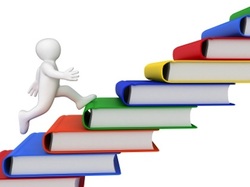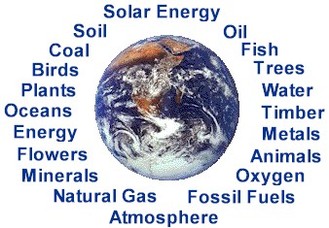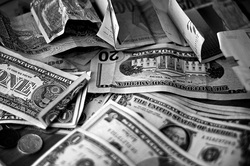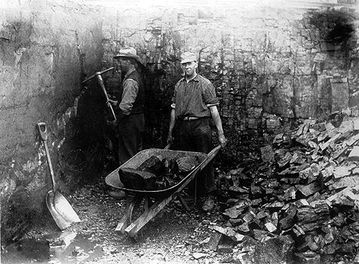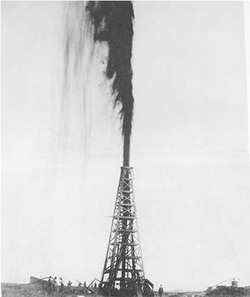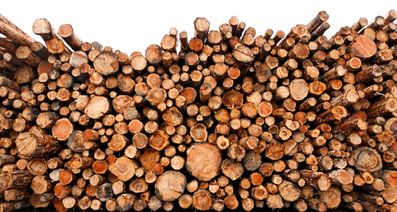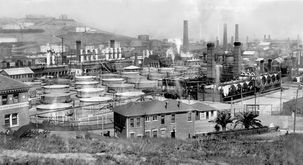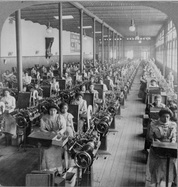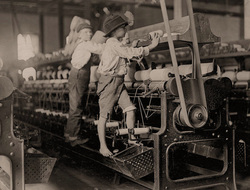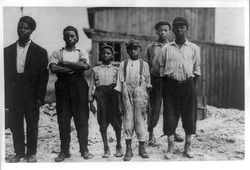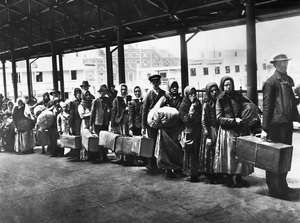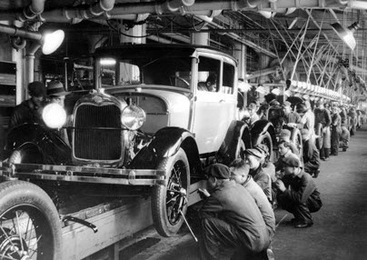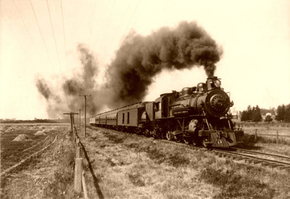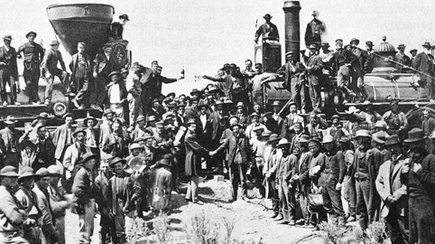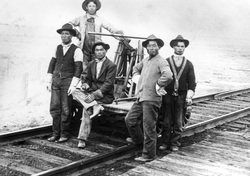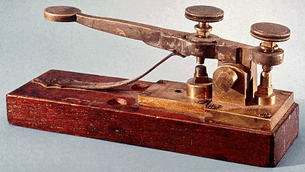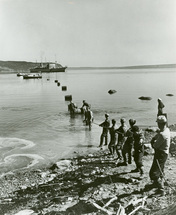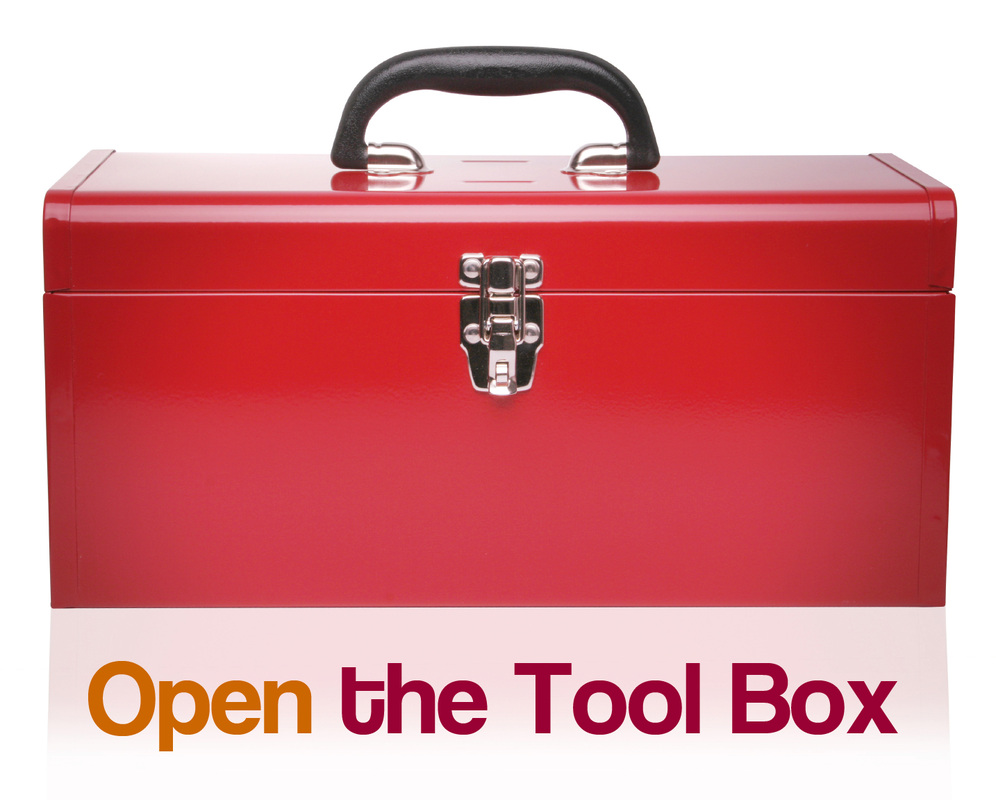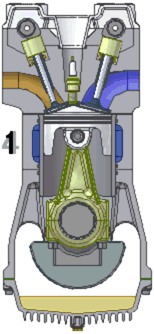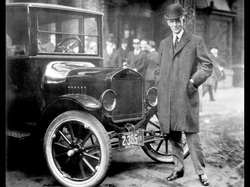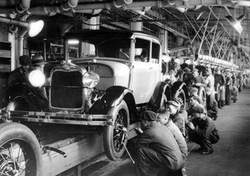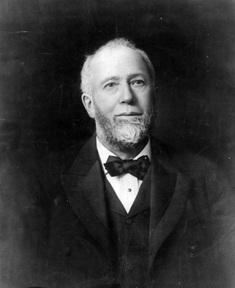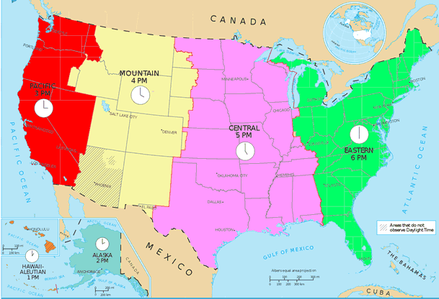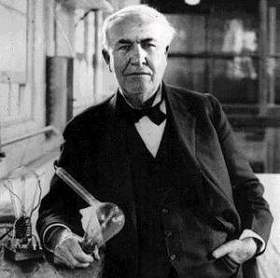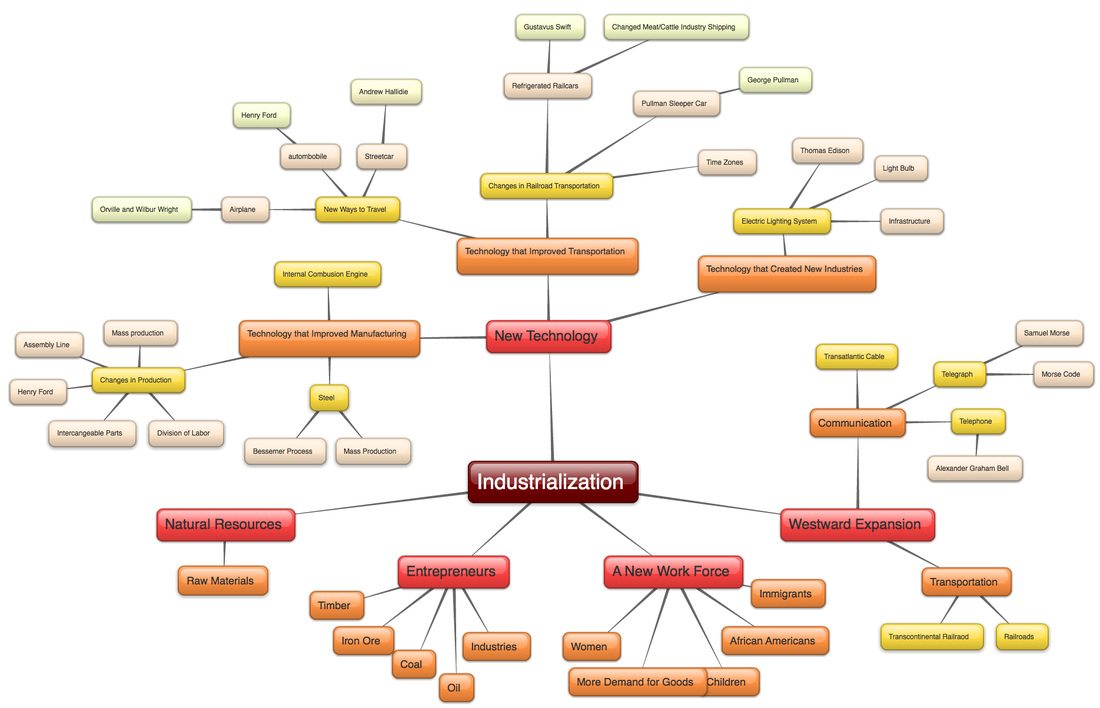The Telephone
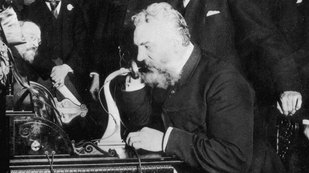 Alexander Graham Bell makes the first phone call.
Alexander Graham Bell makes the first phone call.
The electric telegraph would become a thing of the past soon after March 10, 1876, when the first telephone call was made by its inventor, Alexander Graham Bell. It would not be long before many people bought telephones and Bell’s invention would become a household item. Alexander Graham Bell began a telephone company called Bell Telephone Company. Today, you know this company as American Telephone and Telegraph Company or AT & T.
Westward Expansion helped to bring about industrialization because it opened up land to harvest and excavate natural resources and also to establish industries. It was however, the advancements in transportation and communication that occurred during Westward Expansion that allowed U.S. industrialization to occur so quickly.
New Technology
Technology is the use of science to invent useful things or to solve problems. It was new technology in the form of new inventions and innovations that allowed the U.S. to run industries and convert natural resources into products that people could use. Innovations are new ideas, improvements, or ways of doing things. Many new inventions and innovations were introduced in the late 1800s and early 1900s. These technologies paved the way for U.S. industrialization.
Technology that Advanced Manufacturing
Steel
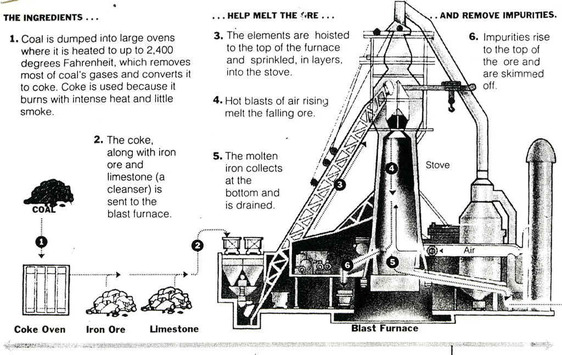 The Bessemer Process
The Bessemer Process
One of the most important innovations that contributed to industrialization was the Bessemer Process. The Bessemer Process was a way of transforming iron into steel by blowing oxygen on iron when it was white, molten hot. It may not seem like this was an important discovery but the Bessemer Process changed everything. Before, the process was discovered, steel was a very expensive metal. It had to be made by artisans and took a long time to make. The Bessemer Process was very quick, easy process, that allowed mass production of steel. Mass production is producing large amounts of one type of product quickly. Steel was stronger, lighter, slower to rust, and easier to work with than iron. So steel replaced iron in constructing things like railways, railcars, cars, planes, pipes, bridges, and buildings. Not only did it change the way things were built, but it also created a brand new industry - the steel industry.
Internal Combustion Engine
Another invention that contributed to industrialization was the internal combustion engine. An internal combustion engine is any engine that operates by burning its fuel inside the engine. Without this invention, we would not have automobiles or airplanes.
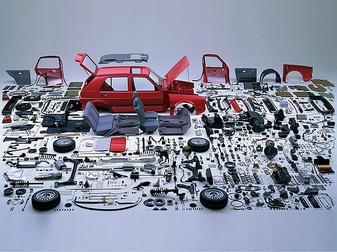 Automobile Interchangeable Parts
Automobile Interchangeable Parts
Secondly, Ford determined that it took 84 steps to create a Model T. So he organized his workers into groups. Each group would only perform one step. They were to perform their assigned step over and over. This was called division of labor.
The first group performed the first step in building the car. When they finished, the portion of the car that they completed, was sent down a chain conveyor belt to the second group. The workers of each group would assemble their portion of the car and send their work down the conveyor belt to the next group until the car was complete. This was called an assembly line. A separate group of workers brought more parts to groups when they would get low to reduce the amount of time workers spent away from their stations.
The first group performed the first step in building the car. When they finished, the portion of the car that they completed, was sent down a chain conveyor belt to the second group. The workers of each group would assemble their portion of the car and send their work down the conveyor belt to the next group until the car was complete. This was called an assembly line. A separate group of workers brought more parts to groups when they would get low to reduce the amount of time workers spent away from their stations.
Technology that Advanced Transportation
New Ways to Travel
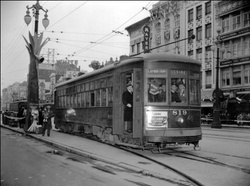 Hallidie's Streetcar
Hallidie's Streetcar
The internal combustion engine and changes of production helped other forms of transportation to develop as well. On January 17, 1871, Andrew Smith Hallidie patented the first cable car. On September 1, 1897, Boston completed its first subway, the Tremont Street Subway. On December 17, 1903, two brothers, Orville and Wilbur Wright flew the first manned airplane.
Changes in Railroad Transportation
|
New inventions and innovations in railroad travel contributed further to industrialization with the invention of refrigerated railcars, the Pullman Sleeper Car, and the creation of time zones.
In 1878, cattle dealer Gustavus Swift had problems delivering live cattle to the East. Swift not only transformed the beef industry but the railroad industry when he decided to slaughter and butcher the cattle before transporting it to the east. Swift hired Andrew Chase to design a refrigerated railroad car to ship the beef. Chase eventually created refrigeration for ships and planes that allowed Swift to sell his product over seas.
|
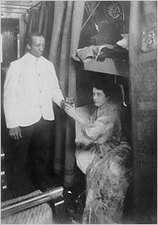 Pullman Sleeper Car
Pullman Sleeper Car
In 1867, George M. Pullman created luxury passenger cars for trains. As new technology developed, he integrated anything that would provide more comfort to his passengers into his railcars. Over time his cars came to have chandeliers with electric lighting, leather seating, food and beverage service, and advanced heating and air conditioning systems. His railcars encouraged more people to travel west to live, vacation, and do business.
|
When national railways were built, local towns decided what time it was based on the sun, so the official time changed from city to city. This was a problem for trains that had to run on a schedule because the sun rises in the east and sets in the west. This causes it to be darker in the east before it gets darker in the west, even though it is the same time in both places.
The nation solved the problem in 1883 by creating time zones. A time zone is a region that sets its time the same because it experiences the sun in the sky the same way. Time zones are the reason that at the exact same moment in time it is 8:00 A.M. in Birmingham, Alabama but 6:00 A.M. in Los Angeles, California.
|
Technology that Created New Industries
Electric Lighting
One invention that changed industry and life in general all over the word was the electric light. Many people give credit to Thomas Edison for inventing the electric light. Edison did not invent it. He innovated it. He made it better by making changes to it.
In Edison's time, electric lights were expensive, dangerous and did not last very long, so many people didn't want them inside their houses. Edison innovated the electric light by changing the way the light bulb was produced and the way it worked. Edison created a bulb that would not shine so brightly so it was not nearly as dangerous. It also lasted a lot longer.
|
The most important innovation was in the materials he used. The materials were very inexpensive making it easy and cheap to manufacture. Edison not only opened up electric lighting to the middle class and poor, but it was the beginning of Edison's most important innovation, the electric lighting system!
The light bulb was a break through in modern technology during Edison's time, but it was Edison’s system of electric lighting that changed everyday life for people all over the world. Edison figured out how to create an infrastructure for lighting buildings and homes in whole towns. Infrastructure is the basic parts and equipment that are needed for a service to function properly in a city or region.
|
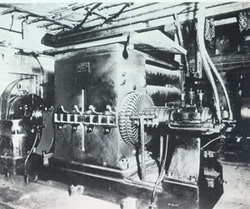 Edison's Electric Power System
Edison's Electric Power System
Edison was able to create electric lighting for whole towns by using light bulbs, electricity generators, wires to get the electricity from the power station to the homes, plugs for lamps, wall sockets, switches for the light bulbs, and many other things. Edison’s first electric lighting infrastructure was the Pearl Street Station in New York City’s financial district. It sent electricity to lights in 25 buildings on September 4, 1882.
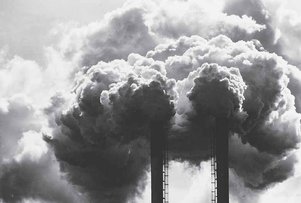
During the Gilded Age, several factors came together that resulted in U.S. industrialization. First, an abundance of natural resources provided the raw materials to produce goods. Entrepreneurs took a risk and created industries to find natural resources to transform into goods that people could use. When entrepreneurs could not get men to work in industries, they recruited women, children, African Americans, and foreigners to work in their factories. Meanwhile, the United States expanded westward into new territories creating the need for faster and easier modes of communication and transportation. The Transcontinental Railroad and the telephone helped improve business between the east and west. Finally, new technology provided improvements in the way goods were produced, transported, and distributed.
Industrialization was the first major event of the Gilded Age. Just as factors led to industrialization, industrialization led to other events in the Gilded Age. Industrialization led to immigration, urbanization, big business, labor disputes, Native American genocide, political corruption, Populism, and Imperialism. These will be the next topics of the Gilded Age we discuss.
WHOLE GROUP ACTIVITY
Analyzing Concept Maps

Concept Maps are when you categorize the main ideas and important details of a reading into groups and subgroups to understand how important details come together to make a main idea.
DIRECTIONS: Look at the concept map of the reading below. You may have to zoom in and scroll around to read everything. What relationships do you see in the reading and the concept map? How did I choose what to put in the concept map? Why did I put these things in the concept map?
DIRECTIONS: Look at the concept map of the reading below. You may have to zoom in and scroll around to read everything. What relationships do you see in the reading and the concept map? How did I choose what to put in the concept map? Why did I put these things in the concept map?
SMALL GROUP ACTIVITY
Making Concept Maps
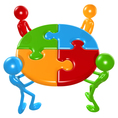
Making your own concept map shows your understanding of a topic by drawing how you formed your ideas and made connections with a reading. There are many types of concept maps. Some include: hierarchies, chains of events, cause and events, similarities and differences, etc....
DIRECTIONS: As a small group, refer to the concept map and discuss the following question. Be ready to share what your group discussed with the whole group.
What other ways could you construct this concept map to show the same thing?
What other ways could you construct this concept map to show the same thing?
INDIVIDUAL ACTIVITY
Lesson Chronicles

A Lesson Chronicles Activity is an individual activity where you prove that you accomplished the lesson mission. Lesson Chronicles require you to keep a notebook or journal with a table of contents. Each entry should be dated. First, you write the lesson mission. Then you prove you "can do" whatever the mission says by answering the essential question of the lesson in PQA format. Remember PQA format means "Put the Question in the Answer".
DIRECTIONS: Below you will see today's lesson added to the Lesson Chronicles' Table of Contents and today's entry set up in PQA format. Work by yourself to prove you have completed today's mission successfully by answering the following question using what you learned today.
What is Industrialization and what are the major factors that led to U.S. industrialization in the Gilded Age?
What is Industrialization and what are the major factors that led to U.S. industrialization in the Gilded Age?
Lesson Chronicles Table of Contents
1. Unit 1: The Gilded Age
2. Topic 1: Industrialization
Name Date
Topic 1: Industrialization
Lesson Mission: I can define Industrialization and list the major factors that led to U.S. industrialization in the Gilded Age.
Industrialization is __________________________________________________________________. The major factors that led to industrialization in the United States were _________________________________________________________________________________________________________________________________________________________________________________________________________________________________________________________________.
HOMEWORK
Family Time

Remember, you have homework every night in Social Studies. Your homework is to show your Lesson Chronicles to your family and tell them what you learned today. Not only will this give you quality time with your family but it will help you review for your unit test.
END OF TOPIC 1 MODULE

Congratulations! You have completed Topic 1 Module!

